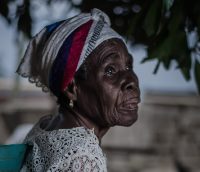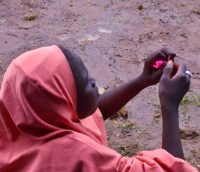Today is marked globally as WORLD AIDS DAY.HIV/AIDS is still a problem in many African countries, with adolescent and young female adults being more at risk. The global HIV statistic put together by UNAIDS IN 2016 showed that;1. 18.2 million [16.1 million–19.0 million] people were accessing antiretroviral therapy (June 2016)
2. 36.7 million [34.0 million–39.8 million] people globally were living with HIV (end 2015)
3. 2.1 million [1.8 million–2.4 million] people became newly infected with HIV (end 2015)
4. 1.1 million [940 000–1.3 million] people died from AIDS-related illnesses (end 2015)
5. 78 million [69.5 million–87.6 million] people have become infected with HIV since the start of the epidemic (end 2015)
6. 35 million [29.6 million–40.8 million] people have died from AIDS-related illnesses since the start of the epidemic (end 2015)
But it is not just grim news. The fight against HIV/AIDS is working as shown by UNAIDS Get on theFast-Track: the life-cycle approach to HIV; ‘The world has committed to end the AIDS epidemic by 2030 as part of the Sustainable Development Goals. We are seeing that countries are getting on the Fast-Track—more than 18 million people are on life-saving HIV treatment and country after country is on track to virtually eliminate HIV transmission from mother to child.’HIV is no longer a death sentence. You can live fully functional and effective lives like Fara James, who has been living with HIV for 22 years.We support preventive measures against HIV/AIDS. Measures like knowing that HIV can only be transmitted via;· Blood;
· Semen;
· Pre-seminal fluids;
· Rectal fluids;
· Vaginal fluids;
· Breast milk; and
· Mother-to-child transfusion.HIV cannot be transmitted through casual contact with a person infected with HIV; casual contacts like a handshake, a hug, or a closed-mouth kiss. And you can’t get HIV from contact with objects such as toilet seats, doorknobs, or dishes used by a person infected with HIV.This means there is no reason to discriminate against people living with HIV or AIDS.
You can however reduce your risk of contracting HIV by;· Get tested and know your partner’s HIV status;· Have less risky sex. Oral sex is much less risky than anal or vaginal sex. Anal sex is the most risky type of sex for HIV transmission;· Use condoms;· Limit your number of sexual partners. The more partners you have, the more likely you are to have a partner with HIV whose HIV is not well controlled or to have a partner with a sexually transmitted disease (STD);· Get tested and treated for STDs;· Talk to your health care provider about pre-exposure prophylaxis (PrEP). PrEP is an HIV prevention option for people who don’t have HIV but who are at high risk of becoming infected with HIV. PrEP involves taking a specific HIV medicine every day. PrEP should always be combined with other prevention options, such as condoms. For more information, read the AIDSinfo fact sheet on Pre-Exposure Prophylaxis (PrEP);· Don’t inject drugs. But if you do, use only sterile drug injection equipment and water and never share your equipment with others.And if you are HIV positive, don’t be ashamed to visit a doctor and get medication. Shame hasn’t helped anyone. Take your medication daily and live a proactive life. And use same preventive methods as listed above.HIV/AIDS is a disease, not a reason to stigmatize someone. Show someone love today. You never know how far it will go.
This Week's
Featured Posts
- All Post
- Back
- Advocacy
- Social Commentary
- Fiction
- Poems
- Everyday People
- Rants
- Unsung Heroes
- Health and Wellbeing
- We Outside
- Social Change
- All Post
- Back
- Advocacy
- Social Commentary
- Fiction
- Poems
- Everyday People
- Rants
- Unsung Heroes
- Health and Wellbeing
- We Outside
- Social Change

- All Post
- Back
- Advocacy
- Social Commentary
- Fiction
- Poems
- Everyday People
- Rants
- Unsung Heroes
- Health and Wellbeing
- We Outside
- Social Change

Quick Links
- Who We Are
- The Gist
- Videos
- Events
- Meet The Team




